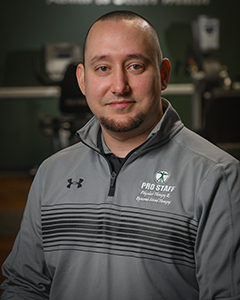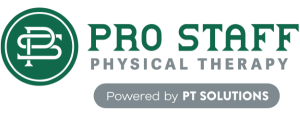5 At-Home Neck Exercises to Relieve Tension

Have you ever noticed that your neck and shoulders tense after a long day at work, and your posture is slightly off? You’re not alone. Did you know neck pain affects more than 30% of adults in the United States, and nearly half will continue to experience some form of chronic neck trouble or frequent flare-ups? Luckily, you can do simple and effective exercises and physical therapy treatment plans at home to help relieve tension and improve your posture. Here are five easy neck exercises you can do no matter where you are. With just a few minutes of exercise daily, you can help reduce neck pain, improve your posture, and feel more relaxed throughout the day.
What is Neck Pain?
Neck pain is one of the most common, affecting millions of Americans. It’s the result of the body reacting to irritation or injury. While you may be aware that your neck hurts or know how to treat the pain effectively and get rid of it completely, many people still have no idea what neck pain is or learned how to treat it. In some cases, it may be a sign of an underlying problem with your neck or spine that needs to be addressed by a doctor or physical therapist with special training in treating neck injuries and conditions. Pro Staff Physical Therapy can help you understand what’s happening in your neck so you can get on the road to recovery.
What are the Signs and Symptoms of Neck Pain?
The signs and symptoms of neck pain can range from mild to severe. The severity of your pain depends on the location, duration, and intensity of the pain. The most common symptom you might experience is a dull ache or tightness in the back of your neck. Other symptoms include:
- Pain in your neck or head area
- Pain that worsens when you move your head around or turn your head from side to side
- Pain that comes on suddenly and is severe enough to wake you up from sleep or make it difficult to stay asleep at night (this is called “cluster headache”)
- Dizziness or fainting when you move your head too quickly or too much, especially if this occurs more than once per day
How is Neck Pain Treated?
Neck pain is a common problem, affecting millions and costing billions in lost time. If your neck is hurting, you can do many things to help relieve it, including
- Medication: Over-the-counter painkillers can help with pain while the condition is diagnosed and treated.
- Physical therapy: involves stretching and strengthening exercises that can help restore movement in your spine.
- Transcutaneous electrical nerve stimulation: TENS involves placing pads over different areas of your body where you experience pain and then turning on a small electrical current through them. The current causes your nerves to send signals about their pain, reducing the pain in those areas.
- Surgical treatment: If cervical degeneration causes myelopathy (spinal cord dysfunction), radiculopathy (dysfunction of nerves to the neck or arms), neck pain, or abnormal neck motion, surgery may be necessary. The goal is to reduce pain and restore spinal stability by removing any part(s) of the vertebra causing instability.
- Home remedies: To take the edge off your pain, try self-care measures that can help relieve neck pain. Apply cold packs or ice towels to reduce inflammation and keep moving—this helps with circulation! Stretching, including neck and shoulder rolls, should begin once the worst pain has subsided. Gently warm your neck with a heating pad or in the shower before starting these exercises; slowly tilt and bend forward from your waist to stretch out muscles at different levels in your spine.
5 At-Home Neck Exercises to Relieve Tension
Have you ever wanted to go home but found yourself stuck at work? Are you feeling a little tense or maybe even stressed out and unsure what to do? When you’re feeling tense, it can be hard to know where to start.
Here are some at-home neck exercises you can do to relieve tension and help you relax.
- Neck roll: Sit in a chair and place your head against the back with your eyes closed for 30 seconds. Repeat three times a day for about five days.
Chin Tuck: Sit in chair and move chin in towards middle of neck “adam’s apple” and hold for 5 seconds. Repeat 5 times and can do 3 times daily. - Single Knee to Chest: Lie on your back and bend one knee and pull to chest with hands. Hold this position for 1 seconds before lowering yourself back onto the floor and repeating on the other side.
- Side neck stretch: Sit in chair and gently use hand to pull head towards one shoulder.
- Massage: Massage your neck with a tennis/lacrosse ball pinned against a wall. This will help improve circulation and circulation of blood in the area, which can help relieve tension and stress.
- Keep moving: Take breaks during the day to stretch and walk around.
If you suffer from extreme neck pain, you should seek Pro Staff Physical Therapy treatment to get back on your feet and resume normal activities as quickly as possible.
How Can Physical Therapy Help with Neck Pain?
Physical therapy is one of the best ways to treat neck pain. Physical therapy involves working on your muscles through exercises that target specific areas of your body. The goal of these exercises is to loosen up those muscles so they’re less likely to cause further damage when Astrained or torn.
The good news is that physical therapy doesn’t have to be painful! Many people find it enjoyable because it helps them feel like they’re getting better faster than if they tried using only medication alone.
When Should you See a Physical Therapist for Neck Pain?
If you have neck pain, it’s important to get evaluated by a physical therapist. They can help you figure out what’s causing your pain and help you develop a plan for managing it. If you have the symptoms of an injury, numbness, swelling, and some of the symptoms of pain in the neck, then you should see your doctor first and then see a physical therapist at their discretion.
It’s also possible that your pain is caused by an injury in another area of your spine, like your back or lower back, which would require more intensive treatment than just seeing a physical therapist once or twice per week. If this is the case, talk with your doctor about getting an MRI or CT scan done on your neck before deciding to see someone else for treatment.
Why Choose Pro Staff Physical Therapy for Neck Pain?
Pro Staff Physical Therapy is a highly-trained, state-of-the-art facility specializing in neck pain. We have extensive experience in treating patients suffering from neck pain, and we’re committed to helping you get your life back on track. Our team comprises experts in many fields, including physical therapy, massage therapy, and chiropractic care. We can help you with neck pain—whether caused by an injury or a condition like carpal tunnel syndrome or arthritis—and we have the tools and knowledge to treat it effectively. We know how frustrating it can be when you’re dealing with neck pain and don’t know where to turn. That’s why we’re here—to help! Call us today at 1-844-734-2278.
Pro Staff Institute, LLC, has a network of outpatient physical rehabilitation centers in New Jersey. Pro Staff was founded in 2010 by Frank Pavlisko and Michael Maffucci. Through Frank’s 25 plus years experience in Physical Therapy and Michael’s experience in Management Services, our goal is to exceed customer expectations by providing the highest quality of service in a fun, family, friendly, and encouraging environment.
PRO STAFF LOCATIONS
OFFERING CERTIFIED
HAND THERAPY
Managing Diabetes: The Role of Physical Therapy
Managing Diabetes: The Role of Physical Therapy As of 2024, approximately 38.4 million Americans, or 11.6% of the U.S. population, have diabetes. Of these, 29.7 million cases are diagnosed, while an estimated 8.7 [...]
Staying Active and Injury-Free During Summer Activities
Staying Active and Injury-Free During Summer Activities Summer is a fantastic time to engage in outdoor sports and physical activities. Whether playing soccer, tennis, cycling, or jogging in the park, staying active is [...]
The Importance of Posture: How Proper Alignment Can Prevent Pain and Injury
The Importance of Posture: How Proper Alignment Can Prevent Pain and Injury In today's fast-paced world, where many hours are spent over desks, smartphones, and computers, posture is often neglected. Poor posture can [...]




